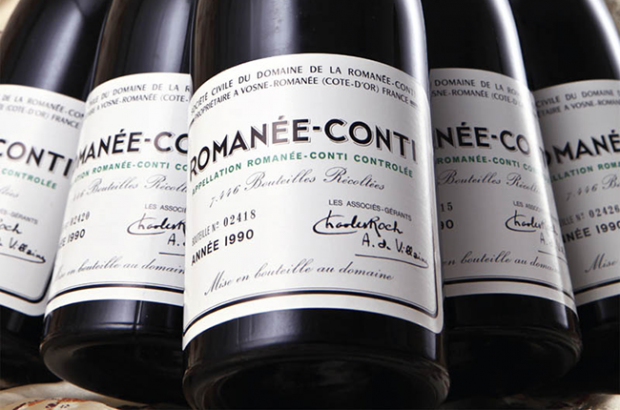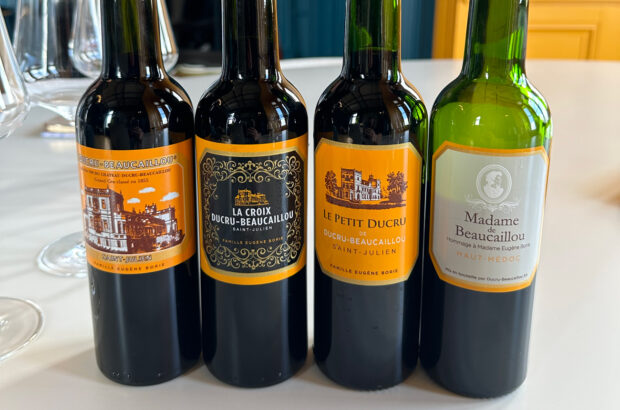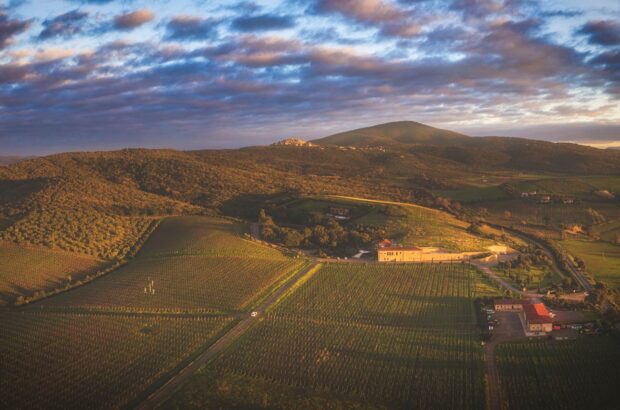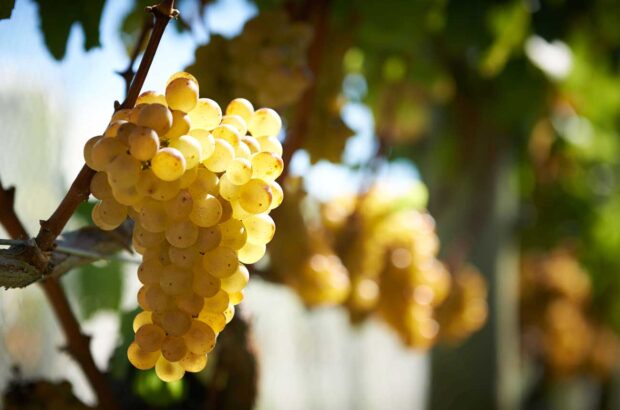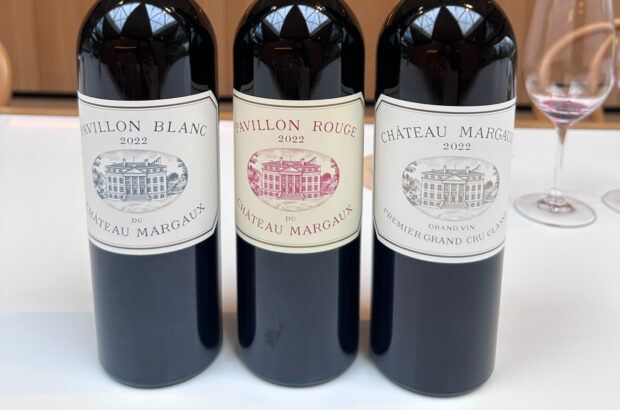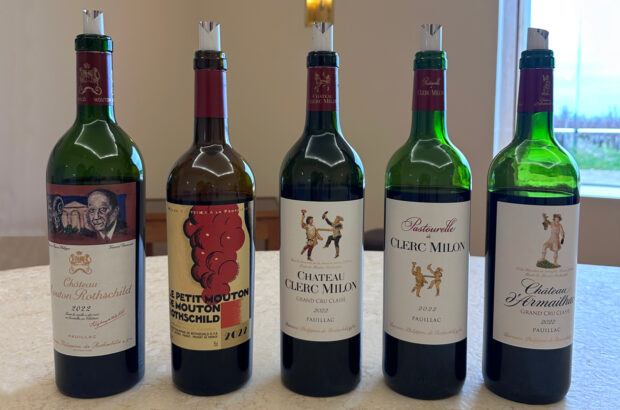Ciliegiolo is the diminutive form of ‘ciliegia’ (cherry), and never was a name more apt than for this native grape of central Italy, because fresh red cherry is exactly the way the wine tastes. There might be a hint of other red fruits and there is often a gentle spicy note, sometimes even some rose petal – but cherry is its signature.
For a long time, it was thought that the grape had been brought to Italy by pilgrims returning from Santa Maria de Compostela in Galicia, but Ian d’Agata, in his erudite tome Native Wine Grapes of Italy (2014), cites DNA analysis which dispels this myth by demonstrating that Ciliegiolo is in fact a crossing of Sangiovese and Moscato Violetto.
Interestingly, the leaf and the bunches of Ciliegiolo are very similar in appearance to those of Sangiovese, and in the traditional mixed-variety vineyards the two were often not distinguished. Additionally, the former was rarely vinified alone but rather used in blends with Sangiovese.
Scroll down for 10 scintillating Ciliegiolo to try
{"content":"PC9wPgo8aDI+VGlueSBwbGFudGluZ3M8L2gyPgo8cD5DaWxpZWdpb2xvIGlzIG1vZGVyYXRlbHkgdGFubmljIHdpdGggbWVkaXVtIHRvIHJpY2ggYWxjb2hvbCBhbmQgbG93IGFjaWRpdHksIHdoaWNoIG1ha2UgZm9yIGEgc29mdCwgc21vb3RoIHRleHR1cmUgb24gdGhlIHBhbGF0ZS4gVGhlIHBvdGVudGlhbCB3ZWFrIHNwb3QgaXMgdGhlIGxvdyBhY2lkaXR5LiBJZiB0aGUgYWxjb2hvbCBnb2VzIHVwIGZ1cnRoZXIgdGhhbiB0aGUgYWNpZGl0eSBjYW4gY29wZSB3aXRoLCB0aGUgcmVzdWx0IGNhbiBiZSBhIGNlcnRhaW4gZmxhYmJpbmVzcywgYnV0IHdoZW4gZXZlcnl0aGluZyBpcyBpbiB0aGUgcmlnaHQgcGxhY2UsIENpbGllZ2lvbG8gaXMgYSBkZWxpY2lvdXMgYW5kIHZlcnkgb3JpZ2luYWwgd2luZS48L3A+CjxwPjxkaXYgY2xhc3M9ImFkLWNvbnRhaW5lciBhZC1jb250YWluZXItLW1vYmlsZSI+PGRpdiBpZD0icG9zdC1pbmxpbmUtMiIgY2xhc3M9ImlwYy1hZHZlcnQiPjwvZGl2PjwvZGl2PjwvcD4KPHA+PGVtPklTVEFUPC9lbT4gZGF0YSBzaG93cyB0aGF0IHRoZSBzdXJmYWNlIGFyZWEgcGxhbnRlZCB0byBDaWxpZWdpb2xvIG5hdGlvbmFsbHkgaGFzIHBsdW1tZXRlZCBmcm9tIGp1c3Qgb3ZlciA2LDAwMCBoZWN0YXJlcyBpbiB0aGUgZWFybHkgMTk4MHMsIHRvIHRoZSBjdXJyZW50IGZpZ3VyZSBvZiAxLDE5NWhhLiBBbG1vc3QgaGFsZiBvZiB0aGlzIGlzIGluIDxhIGhyZWY9Imh0dHBzOi8vd3d3LmRlY2FudGVyLmNvbS93aW5lL3dpbmUtcmVnaW9ucy90dXNjYW55LXdpbmVzLyIgdGFyZ2V0PSJfYmxhbmsiIHJlbD0ibm9vcGVuZXIiPjxzdHJvbmc+VHVzY2FueTwvc3Ryb25nPjwvYT4gKDU1MWhhKSBhbmQgb2YgdGhpcywgbW9yZSB0aGFuIGhhbGYgaXMgaW4gdGhlIHByb3ZpbmNlIG9mIEdyb3NzZXRvICgzMDloYSkuIFVtYnJpYSBoYXMgMTMwaGEgYW5kIExhemlvIGp1c3Qgb3ZlciAxMTVoYS48L3A+CjxwPldoZW4geW91IGNvbnNpZGVyIHRoYXQgaW4gVHVzY2FueSwgdGhlIHJlZ2lvbiB3aXRoIHRoZSBiaWdnZXN0IHByb2R1Y3Rpb24sIENpbGllZ2lvbG8gcmVwcmVzZW50cyBsZXNzIHRoYW4gMSUgb2YgdGhlIHRvdGFsIHZpbmV5YXJkIGFyZWEsIGl0IGlzIGNsZWFyIHRoYXQgd2UgYXJlIHRhbGtpbmcgYWJvdXQgYSBuaWNoZSB2YXJpZXR5LjwvcD4KPGgyPlJlbmV3ZWQgaW50ZXJlc3Q8L2gyPgo8cD5Ib3dldmVyLCB0aGVyZSBhcmUgc2lnbnMgb2YgYSByZXZpdmFsLiBUaGUgPGVtPmNvbnNvcnppbzwvZW0+IG9mIHRoZSBNYXJlbW1hIFRvc2NhbmEgRE9DIHB1dHMgdGhlIGN1cnJlbnQgcHJvZHVjdGlvbiBvZiBDaWxpZWdpb2xvIGluIHRoZSBkZW5vbWluYXRpb24gYXQgYXJvdW5kIDQwMCwwMDAgYm90dGxlcyBhIHllYXIsIGFuZCByZXBvcnRzIGFuIGluY3JlYXNlIGluIHBsYW50aW5ncyBvZiB0aGUgdmFyaWV0eS48L3A+CjxkaXYgY2xhc3M9ImFkLWNvbnRhaW5lciBhZC1jb250YWluZXItLW1vYmlsZSI+PGRpdiBpZD0icG9zdC1pbmxpbmUtMyIgY2xhc3M9ImlwYy1hZHZlcnQiPjwvZGl2PjwvZGl2Pgo8cD5Tb21ldGhpbmcgaXMgbW92aW5nIGJlaGluZCB0aGUgc2NlbmVzIHRvbzogZmlndXJlcyBmcm9tIHRoZSBOYXRpb25hbCBHcmFwZSBWaW5lIFJlZ2lzdGVyIHNob3cgYSBzdGVhZHkgdXAtdHVybiBpbiB0aGUgbnVtYmVyIG9mIGdyYWZ0ZWQgQ2lsaWVnaW9sbyBwbGFudHMgcHJvZHVjZWQgb3ZlciB0aGUgbGFzdCBmb3VyIHllYXJzLjwvcD4KPHA+QWNjb3JkaW5nIHRvIHRoZSBzYW1lIHNvdXJjZSwgbnVyc2VyaWVzIHR1cm5lZCBvdXQgYSB0b3RhbCBvZiA0NjEsNjYyIHZpbmVzIGluIDIwMjIuIElmIHRoZXNlIHdlcmUgYWxsIHBsYW50ZWQgZXggbm92bywgaXQgd291bGQgdHJhbnNsYXRlIGludG8gYXJvdW5kIDkyaGEgb2YgbmV3IHZpbmV5YXJkIOKAkyBkZWZpbml0ZWx5IGEgc2lnbiBvZiBpbnRlcmVzdCBpbiB0aGUgdmFyaWV0eS48L3A+CjxkaXYgY2xhc3M9ImFkLWNvbnRhaW5lciBhZC1jb250YWluZXItLW1vYmlsZSI+PGRpdiBpZD0icG9zdC1pbmxpbmUtNCIgY2xhc3M9ImlwYy1hZHZlcnQiPjwvZGl2PjwvZGl2Pgo8cD5Bbm90aGVyIHNpZ24gb2YgY2hhbmdpbmcgYXR0aXR1ZGVzIGlzIHRoZSA8ZW0+Q2lsaWVnaW9sbyBkaSBNYXJlbW1hIGUgZCYjODIxNztJdGFsaWE8L2VtPiBldmVudCwgY3JlYXRlZCBpbiAyMDIzIGFuZCBub3cgaW4gaXRzIHNlY29uZCBlZGl0aW9uLiBPdmVyIHRoZSBwYXN0IHR3byB5ZWFycywgdGhlIHNob3cgaGFzIGJyb3VnaHQgdG9nZXRoZXIgYXJvdW5kIDEyNSB3aW5lcyBmcm9tIHRoZSBjdXJyZW50IHZpbnRhZ2UgcmVsZWFzZXMsIGFuZCBhYm91dCB0aGUgc2FtZSBudW1iZXIgaW4gc2luZ2xlLXByb2R1Y2VyLCB2ZXJ0aWNhbCB0YXN0aW5ncy48L3A+CjxwPkkgYW0gdmVyeSBoYXBweSB0byBoYXZlIGZvbGxvd2VkIGJvdGggZWRpdGlvbnMsIGhlbGQgaW4gdGhlIHZpbGxhZ2Ugb2YgU29yYW5vIGluIHRoZSBNYXJlbW1hIChpbmNpZGVudGFsbHksIGEgcmVhbCBnZW0pLCBhbmQgdGhlc2UgYXJlIG15IHRob3VnaHRzIG9uIENpbGllZ2lvbG8gZ2FpbmVkIHNvIGZhcjo8L3A+CjxkaXYgY2xhc3M9ImFkLWNvbnRhaW5lciBhZC1jb250YWluZXItLW1vYmlsZSI+PGRpdiBpZD0icG9zdC1pbmxpbmUtNSIgY2xhc3M9ImlwYy1hZHZlcnQiPjwvZGl2PjwvZGl2Pgo8cD48c3Ryb25nPkFnZWFiaWxpdHk8L3N0cm9uZz46IEkgYW0gb3BlbiB0byBiZSBwZXJzdWFkZWQgb3RoZXJ3aXNlLCBidXQgbXkgaW1wcmVzc2lvbiBpcyB0aGF0IENpbGllZ2lvbG8gZHJpbmtzIGJlc3QgaW4gb25lIHRvIGZvdXIgeWVhcnMuIFRhc3RpbmcgdmVydGljYWxzIGJhY2sgdG8gMjAxMiwgbXkgZXhwZXJpZW5jZSBpcyB0aGF0IG9sZGVyIHdpbmVzIHBlcmZvcm0gdW5ldmVubHkgYW5kIG9mdGVuIGRyeSBvdXQuIEkgYW0gYWxzbyBub3QgY29udmluY2VkIG9mIHRoZSByZWxldmFuY2Ugb2YgYSBSaXNlcnZhIGNhdGVnb3J5IGZvciBDaWxpZWdpb2xvLjwvcD4KPHA+PHN0cm9uZz5WaW5pZmljYXRpb248L3N0cm9uZz46IEFyb3VuZCBoYWxmIG9mIHRoZSBwcm9kdWNlcnMgb24gc2hvdyB2aW5pZnkgYW5kIGFnZSB0aGVpciB3aW5lcyBpbiBzdGFpbmxlc3Mgc3RlZWwgYW5kL29yIGNlbWVudCB2YXRzLCBhbmQgdGhpcyBtYWludGFpbnMgdGhlIGludGVncml0eSBvZiB0aGUgZnJ1aXQuIFVzZWQgd2l0aCBkaXNjcmV0aW9uLCBiYXJyZWwgYWdlaW5nIGJyaW5ncyBvdXQgYW5vdGhlciBkaW1lbnNpb24sIGJ1dCB0b28gbXVjaCBuZXcgb2FrIGFkZHMgYSBsYXllciB3aGljaCBDaWxpZWdpb2xvIGRvZXMgbm90IG5lZWQuPC9wPgo8cD48c3Ryb25nPlZpbnRhZ2VzPC9zdHJvbmc+OiBUaGUgMjAyM3MgYXJlIGZyZXNoIGFuZCBkaXJlY3QsIGEgbGl0dGxlIGxpZ2h0IGJ1dCB2ZXJ5IGVuam95YWJsZS4gV2luZXMgZnJvbSAyMDIyIGFyZSBtb3JlIHN0cnVjdHVyZWQsIGFuZCBkcmllci4gVGhlIGJlc3Qgb2YgdGhlIGN1cnJlbnQgdmludGFnZXMgaXMgMjAyMSwgd2l0aCBhbGwgdGhlIGFyb21hcyBvZiB0aGUgdmFyaWV0eSBhbmQgYSB0b3VjaCBtb3JlIGNvbmNlbnRyYXRpb24gaW4gdGhlIGZydWl0LiBUaGUgMjAyMHMgYXJlIG1vcmUgdGFubmljLCB3aXRoIHNvbWV0aW1lcyBvdmVycmlwZSBmcnVpdC4gRGVzcGl0ZSBteSBjb21tZW50cyBhYm92ZSBhYm91dCBvbGRlciB3aW5lcywgaW4gdGhlIHZlcnRpY2FsIHRhc3RpbmdzIHRoZSAyMDE2cyBzaG93ZWQgdmVyeSB3ZWxsIOKAkyBoZWFkIGFuZCBzaG91bGRlcnMgYWJvdmUgdGhlIG90aGVyIG9sZGVyIHZpbnRhZ2VzLjwvcD4KPHA+PHN0cm9uZz5TaXRlczwvc3Ryb25nPjogVGhlIGZvY3VzIG9mIHByb2R1Y3Rpb24gaXMgdGhlIG1pZC10by1oaWdoZXIgc2xvcGVzIG9mIHRoZSBNYXJlbW1hLCBhcm91bmQgdGhlIHZpbGxhZ2VzIG9mIE1hZ2xpYW5vLCBNYW5jaWFubyBhbmQgU2NhbnNhbm8sIHdoZXJlIENpbGllZ2lvbG8gdGhyaXZlcyBpbiB0aGUgc2FtZSBzb2lscyBhcyB0aGUgU2FuZ2lvdmVzZSBvZiB0aGUgTW9yZWxsaW5vIGRpIFNjYW5zYW5vIERPQ0cuIFRoZSB0dWZmYWNlb3VzIHNvaWxzIGF0IFBpdGlsZ2lhbm8gaGF2ZSBsb25nIGJlZW4gcmVjb2duaXNlZCBmb3IgZ2VuZXJvdXNseSBmdWxsLWJvZGllZCB3aW5lcy4gSW4gVW1icmlhLCB0aGUgTmFybmkgSUdUIG1ha2VzIOKAkyBvbiB0aGUgYmFzaXMgb2YgbGltaXRlZCBleHBlcmllbmNlIG9mIGEgc21hbGwgcHJvZHVjdGlvbiDigJMgcmVmaW5lZCB3aW5lcyB3aXRoIGEgbWFya2VkIGZsb3JhbC1oZXJieSBjaGFyYWN0ZXIuPC9wPgo8aDI+Q2lsaWVnaW9sbyYjODIxNztzIGZ1dHVyZTwvaDI+CjxkaXYgY2xhc3M9ImluamVjdGlvbiI+PC9kaXY+CjxwPkxpa2UgVmVybWVudGlubywgd2hpY2ggaGFzIGV4cGxvZGVkIG92ZXIgdGhlIHBhc3QgMTAgeWVhcnMgb24gdGhlIFR1c2NhbiBjb2FzdCwgQ2lsaWVnaW9sbyBpcyBhIHF1aW50ZXNzZW50aWFsbHkgTWVkaXRlcnJhbmVhbiB2YXJpZXR5LCBwZXJmZWN0bHkgaW4gaXRzIGVsZW1lbnQgaW4gdGhlIE1hcmVtbWEgd2hlcmUgaW50ZXJuYXRpb25hbCB2YXJpZXRpZXMgYXJlIHN1ZmZlcmluZyB0aGUgZWZmZWN0cyBvZiBjbGltYXRlIGNoYW5nZS48L3A+CjxwPklmIENpbGllZ2lvbG8gaXMgZ29pbmcgdG8gdGFrZSBvZmYgb24gYSBsYXJnZXIgc2NhbGUg4oCTIGFuZCB0aGVyZSBhcmUgc2lnbnMgdGhhdCB0aGUgYW1iaXRpb24gaXMgbm90IGxhY2tpbmcg4oCTIHRoZSBUdXNjYW4gY29hc3QgaXMgZ29pbmcgdG8gYmUgdGhlIGxhdW5jaCBwYWQuPC9wPgo8cD4K"}
Ciliegiolo: 10 to try
{}
{"wineId":"86704","displayCase":"standard","paywall":true}
{"wineId":"86705","displayCase":"standard","paywall":true}
{"wineId":"86706","displayCase":"standard","paywall":true}
{"wineId":"86707","displayCase":"standard","paywall":true}
{"wineId":"86708","displayCase":"standard","paywall":true}
{"wineId":"86709","displayCase":"standard","paywall":true}
{"wineId":"86710","displayCase":"standard","paywall":true}
{"wineId":"86711","displayCase":"standard","paywall":true}
{"wineId":"86712","displayCase":"standard","paywall":true}
{"wineId":"86713","displayCase":"standard","paywall":true}
{}
Related articles



